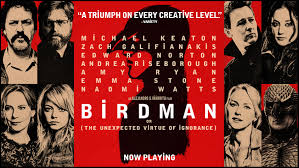Recently, America has endured many disasters: killer blizzards, innumerable mass shootings, governmental dysfunction, and a psychopathic bigot leading in the polls.
But conservatives have identified the culprit for all these and every other issue. They know the main bad guy vexing this nation and unleashing infinite misery upon our country. Yes, I’m talking about diversity.
You see, the Supreme Court’s decision to end affirmative action didn’t quite make America safe enough for white men. So now conservatives are unleashing their ire on diversity, equity, and inclusion (DEI) initiatives. These are the often half-assed attempts that institutions make to include ethnic minorities in their systems.
Conservatives see these programs as unconstitutional and immoral. I assure you that it is completely coincidental that these are among the only areas of American culture where white men are not in charge. Yup, conservatives are taking a completely principled stand… ahem.
In any case, when Boeing airplanes came apart in midair, most experts pointed to “the weakened regulations on Boeing thanks to more than $65 million in lobbying efforts.”

But conservatives weren’t so easily hoodwinked. They shrieked that airplanes were disintegrating because that’s what happens “when you’re focused on DEI and maybe less focused on engineering and safety.”
Now, I could point out that “this narrative has no basis in fact” and that Boeing is not “particularly diverse, either at the workforce level… or on the corporate ladder, where the overwhelming majority of executives are white men.” No matter, it must be the fault of the stray black executive or that Latino engineer who clearly didn’t belong there.
Now, commentators have pointed out that “right-wing media figures have also erroneously blamed last year’s train derailment in Ohio and the collapse of the Silicon Valley Bank on DEI initiatives,” despite the fact there is zero evidence for that. In truth, many of the catastrophes occurring in America are taking place under the leadership of white guys. But it’s impolite to point that out to conservatives.
So they will continue to blame ethnic minorities and eliminate even minimal attempts to increase diversity. As a result, attacks on diversity in education and within major corporations have intensified.
For example, the University of Florida has eliminated all its DEI positions and canceled its DEI-related contracts. And the accounting firm PwC has dropped its diversity targets.
Across the country, DEI funding and staffing are plummeting, “after a two-year boom in the wake of the protests that followed the murder of George Floyd in 2020.”
You remember that whole George Floyd thing, don’t you? It’s like Covid or the collapse of the Trump economy — something that apparently never happened.
In any case, if conservatives get their way and vanquish diversity, we will get rid of all those undeserving ethnic minorities who are messing up everything and provoking every disaster that occurs. Sure, you might argue that many studies have shown that diverse teams perform better than racially homogeneous ones and that companies that embrace diversity get better results.
But I’m sure those studies are wrong. Yeah, they were probably created by some black guy.













